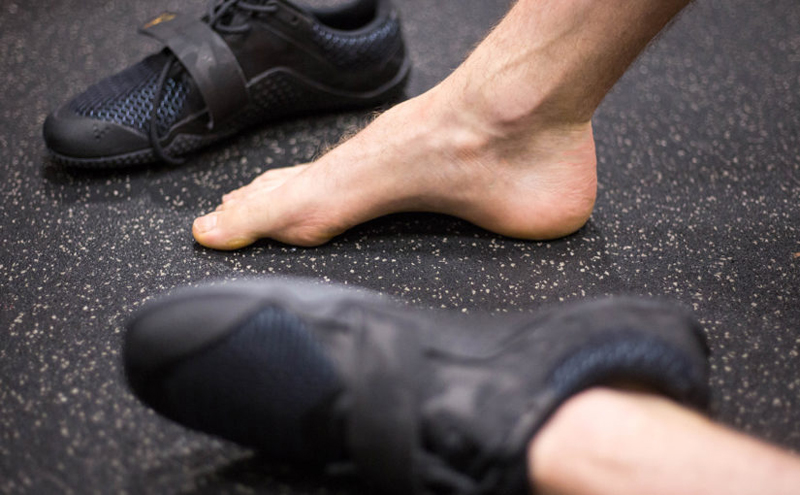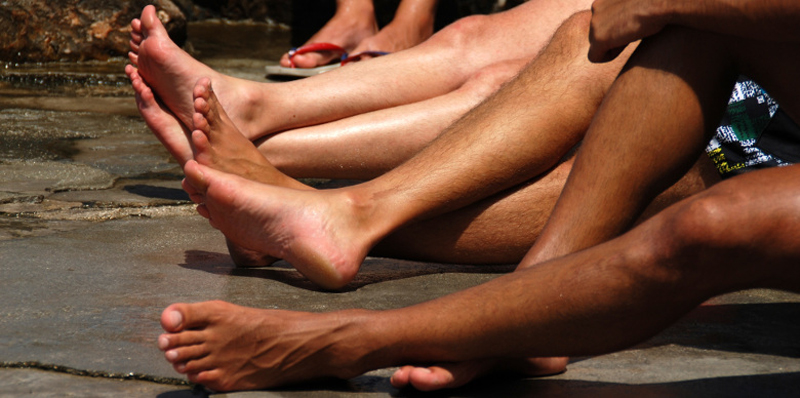
Today we’re diving into a hot topic: Arch Height. Most footwear companies are talking about it, every shoe store or doctor’s office tries to fix it. So we’re here to tackle some big questions today. What does a healthy arch look like? More so, is arch height even important?
Let’s start with the basics. Each foot contains three arches, the Medial-Longitudinal Arch, Lateral-Longitudinal Arch, and the Transverse or Metatarsal Arch. Most footwear companies  and some physicians are primarily concerned with the Medial-Longitudinal Arch along the inside of the foot. Here at Northwest Foot and Ankle and Correct Toes, we think that all three arches have a purpose. Foot arches share some key characteristics with the shape of architectural arches, they are designed to be strong! But unlike architectural arches, foot arches are also meant to be mobile. The mobility of arches helps to absorb impact as we move, jump and run. Arch mobility also helps with balance, as our foot is capable of making hundreds of tiny adjustments to react to different surfaces and keep our body stable. Arch mobility also acts as a spring, absorbing motion with each step, and providing energy to propel us into the next step. This flexibility along the arches disperses weight, and cushions all the joints above the foot, dampening forces that would otherwise be translated directly to the knees, hips and spine. So what happens when the arches don’t work, or when arch mobility is actively prevented?
and some physicians are primarily concerned with the Medial-Longitudinal Arch along the inside of the foot. Here at Northwest Foot and Ankle and Correct Toes, we think that all three arches have a purpose. Foot arches share some key characteristics with the shape of architectural arches, they are designed to be strong! But unlike architectural arches, foot arches are also meant to be mobile. The mobility of arches helps to absorb impact as we move, jump and run. Arch mobility also helps with balance, as our foot is capable of making hundreds of tiny adjustments to react to different surfaces and keep our body stable. Arch mobility also acts as a spring, absorbing motion with each step, and providing energy to propel us into the next step. This flexibility along the arches disperses weight, and cushions all the joints above the foot, dampening forces that would otherwise be translated directly to the knees, hips and spine. So what happens when the arches don’t work, or when arch mobility is actively prevented?

Similar to most features of the body, arches have recently been judged on their visible aesthetic. Medical providers and footwear salespeople are more likely to analyze the height of one’s arches, rather than their function. Arch height can generally be classified into three categories; high, moderate (average), and low. Like nose size or face shape, the largest factor determining arch height is primarily linked to genetics and race. Rather than accounting for a spectrum of healthy arch variation across the population, individuals are frequently misled into thinking that their arches are shaped poorly, perhaps too low or too high. While critiqued on both ends of the height spectrum, arch height is NOT an indication of overall foot health. Health is better determined by function. Like most musculoskeletal concerns, our body functions best when strong. Strong feet or strong arches will outweigh arch height.
Since low-arched foot types get picked on the most, let’s start there first. There is nothing inherently unhealthy nor damaging about a low arch. Low arches will not lead to an increased propensity of injury or foot failure. However, low arches that are weak will generally be more mobile than most foot types. When a body part is too mobile, the increased range of motion can stress certain muscles, or lead to joints being pulled slightly out of alignment. Joint range of motion (ROM) and muscular control of joint ROM are best controlled by strengthening associated muscle groups. Simply by strengthening muscles that control arch movement, we can begin to limit and regulate arch mobility so that someone with low arches now can control foot mobility. Low arches are not the same as flat feet or Pes Planovalgus. Pes Planovalgus is the failure of all three arches, where the entire bottom surface of the foot contacts the ground as the foot is weighted. Most people ‘diagnosed’ with flat feet do not have true Pes Planovalgus, but rather just a naturally low arch and/or a weak foot.
The first steps to treating a weak arch will be to encourage strengthening of foot musculature. As with all strengthening throughout the body, joints and muscles must move to achieve results. The old principle of “If you don’t use it, you lose it” rings so true! Supportive footwear and orthotics prevent motion, which can lead to foot muscle atrophy. Achieving foot strength will require the foot to move intermittently and progressively. The best way to achieve foot muscle contractions is to slowly remove support and to transition into footwear that is flat, flexible, and naturally shaped. Challenging muscles to move regularly in an unsupported environment will encourage foot muscles to strengthen and internally support the arches.
The second step to controlling excess foot motion is to preserve and maintain natural foot shape where our foot is level and the toes are spread. The Hallux, or big-toe, position is intimately important for controlling foot and arch function. Additionally, when the Hallux is grounded and spread away from the second toe, the motion of the Medial-Longitudinal arch height is subtly limited. For low-arched individuals whom are working to strengthen their feet or to correct structural misalignment, Correct Toes and achieving natural foot shape will be key.
Occasionally high-arched individuals are chastised for having ‘too much’ space under the arches. Increased arch height is also not an indication for arch failure. However, high arched feet can generally be more rigid than most foot types. When arches are too rigid, they do a poor job absorbing impact or dampening the forces of gait. Rigid arches can fail to adapt to changes in surfaces, lacking finesse or refinement to control balance. Rigid arches are most often the result of bone and joint shape preventing motion, or linked to ligament rigidity and stiffness. Similar principles apply to the treatment of a rigid-arch. Rigid arches perform better when they are allowed to move and feel. Use of flexible footwear will allow rigid feet to better sense surrounding environments. Naturally shaped footwear will increase base of support size and foundation, improving balance. Flat footwear will encourage weight to be evenly dispersed across the whole foot.
Regardless of where you fall along the arch spectrum, individuals with low arches or high arches can also achieve foot health! The biggest factor to maintaining a healthy foot will be how your arches move, not how they look. Footwear shape and construction plays a key role in the function of the foot arches. It’s important to purchase shoes that will have a naturally shaped toe box to encourage proper alignment of the toes—as toes can play a critical role for maintaining arch function. Correct Toes can also facilitate natural alignment of toes, helping to align the Hallux and stabilize the Medial-Longitudinal arch. Footwear should also be level from heel to toe so arches can load and move evenly. Ideal healthy footwear will also be flexible to encourage natural movement of the arches to foster impact absorption and aid balance.
For more information on arches, check out Artificial Arch Enemy, or additional information on Correcttoes.com
[jbox color=”yellow” icon=”http://naturalrunningcenter.com/wp-content/uploads/2017/03/ray-mcclanahan-60×60.png” title=”Correct Toes & Dr. Ray”]
Correct Toes were designed by sports podiatrist and elite distance runner Dr. Ray McClanahan, who was unsatisfied with temporary results offered through conventional symptom management techniques: orthotics, medication and surgery. He was also frustrated with his own persistent foot pain and recurring running injuries. Dr. Ray desired to cure the root cause of the foot problems rather than settle for symptom management. Ultimately, he developed Correct Toes toe spacers, that would enable his patients to combat and prevent common foot problems. Today Correct Toes have become a vital tool for those who find their highest joy when in motion.
[/jbox]


What a long post but I am really attracted to read the whole article. Because I only know one type(?) of arch and it’s Medial – Longitudinal Arch. My best friend has a small and high arched foot. She always gets problem as buying shoes. You know, it seems like all (normal) shoes are massively produced and it leads to foot issues. After reading your given information I have some idea to tackle this. Thanks for sharing.